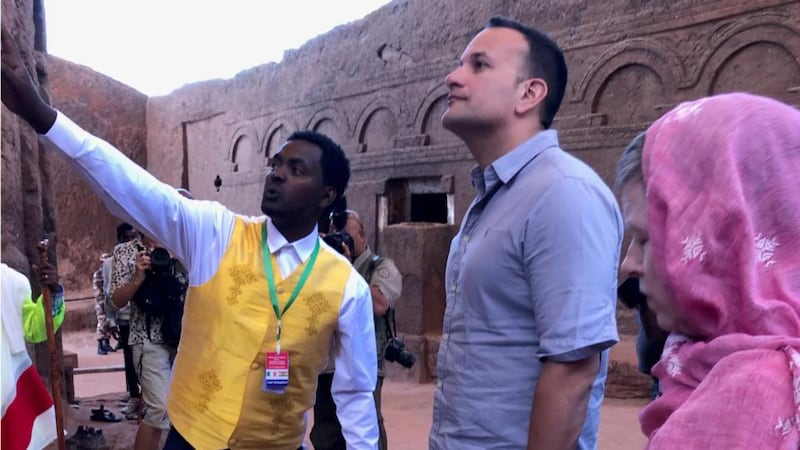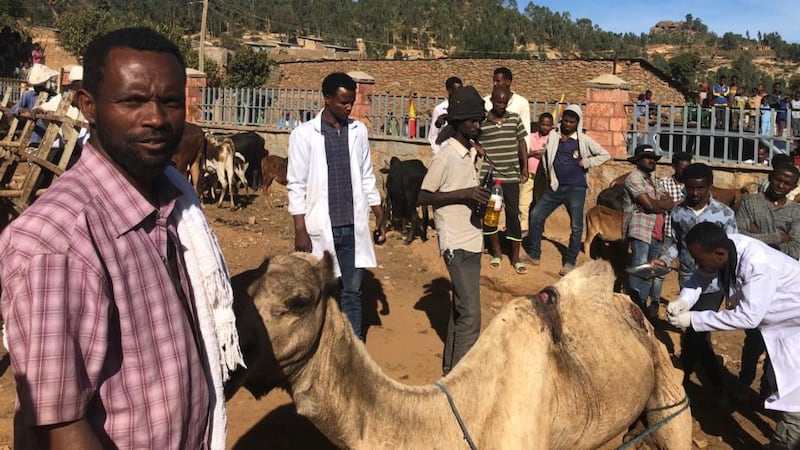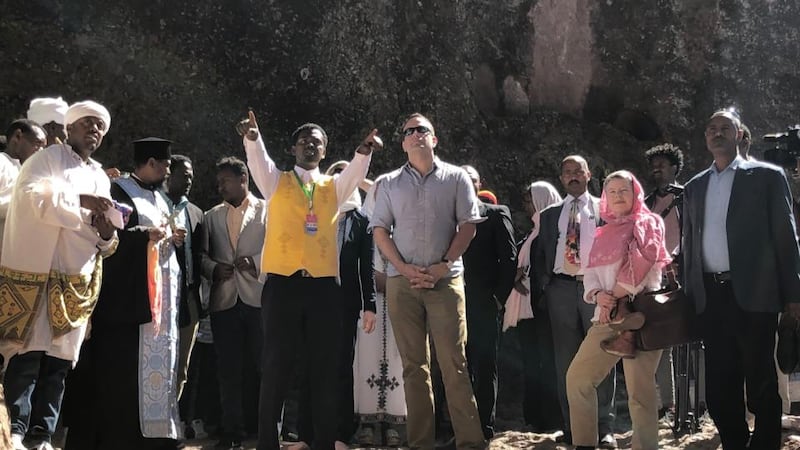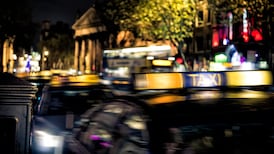Yesterday was Leo Varadkar's first visit to the heart of Africa. Sure he had been on the continent for four days but it was controlled. He was in a protected military zone in Mali and then had a formal day of meeting the prime minister and president of Ethiopia in Addis Ababa.
Day four brought him across the high plateaus of Ethiopia into the northern province of Tigray, one of the poorest regions of Ethiopia. Largely deforested, it is prone to drought and has seen much of its forest cover disappear where millions live a subsistence life, even when the rains are good.
"I left today feeling how fortunate we are to live in a country like Ireland, " he reflected afterwards. "I know we have plenty of problems, I don't discount it for a second, but when you come to a truly poor, developing country like Ethiopia you don't discount the fact that most people get by only on the crops they can grow and the animals they have. And the village has only one water source."
It was, he said, a “humbling experience”.

The humbling experience related not only to poverty. It was also the open-hearted enthusiasm of the hundreds of Ethiopian people he met and who greeted him, young and old, most with a default characteristic of hopefulness.
“Notwithstanding the fact people are very poor, they are warm and very welcoming.
“It’s the first time I have seen Irish Aid. I can say to the people in Ireland that their money is being well spent.”
Heritage
Earlier in the day, they encountered Ethiopia’s rich heritage during a visit to Lalibela, an amazing complex of 11 churches hewn completely out of rock. It was created almost a millennium ago by the unique Ethiopian Orthodox church. Like the Skelligs in Kerry it is a UNESCO World Heritage site.
In an elaborate greeting ceremony, hundreds of Orthodox priests, dressed in elaborate white vestments with a red stripe and a white turban filed into the space about the site. They performed a chanted narrative for the Taoiseach accompanied by processional dance.
“This is the biggest monolithic church in the world, made out of solid rock,” the tour guide informed the Taoiseach in the first church.
The inside of the churches provided a contrast to the punishing heat outside. Dark and cool, they revealed carvings, remnants of frescos, and golden orthodox crosses.

The visit finished at the church of St George, the most remarkable of the 11. The ancient masons carved a 25-metre crater in the rock. In the centre they carved a cruciform church, which can be reached by descending steps.
“I read about them when I was a young boy and always thought I would have a chance to visit this place,” said the Taoiseach.
Partnership
He announced a development partnership between the Ireland and Ethiopia to help preserve the site.
“What did strike me was the monuments are at risk. They are not in as good a condition as they should be. The infrastructure around Lalibela is very basic. There is no paved road. So I think this is where we can be helpful.
“We have experience of one of our own heritage sites, Sceilig Mhichil, which has to be cared for. Where we can help is open up the tourist opportunities but do it in a way that is sensitive. There must be enormous potential.”

He also announced Lalibela would be lit green on St Patrick's Day. The possibility of a visit by cultural ambassador for Ireland, actress Ruth Negga, who is half-Ethiopian, has also been raised.
Flying an hour further north the convoy crossed rutted tracks to reach villages in remote areas of Tigray.
In a small dusty town, Wukro, he visited an Irish-funded veterinary clinic. The large yard was packed with camels, cattle, sheep, goats, and donkeys. This clinic treats and vaccinates scores of thousands of animals.
In chaos of the yard, Eshuwel Dee looks on as vets work on his camel. It has huge welts and sores on its hump and on its rump. Both were caused by a faulty harness. The injuries occurred last September were ignored as he needed to complete the harvest. The animal is in excruciating pain and cries out periodically.
Rural village
The Taoiseach’s next stop was to Kawaneet, a remote rural village. He crouched to enter the tiny straw hut of Leterbirhan Tsegay, herself a tiny women with bronzed weathered skin.
Until recently she had no possessions. She received a micro loan from Irish Aid which helped her buy four sheep.
“I have not seen change but I am increasing my herd. I now have eight sheep and will soon have more.”
He also visited the Kawaneet health post, one of 45 such posts in Tigray part-funded by Irish Aid.
At the health post, his medical background comes into play, as he asks about HIV.
The doctor replies the prevalence of HIV is 1.3 per cent.
“Compared to southern Africa it is very low,” replies the Taoiseach.
He already had a good knowledge of Africa. But yesterday it was all about the human facts on the ground.








